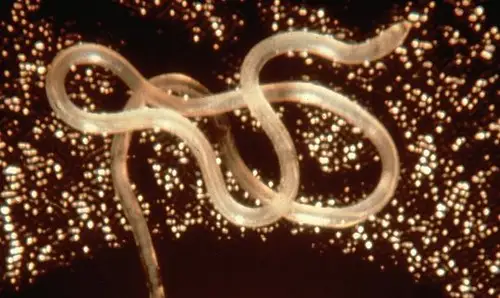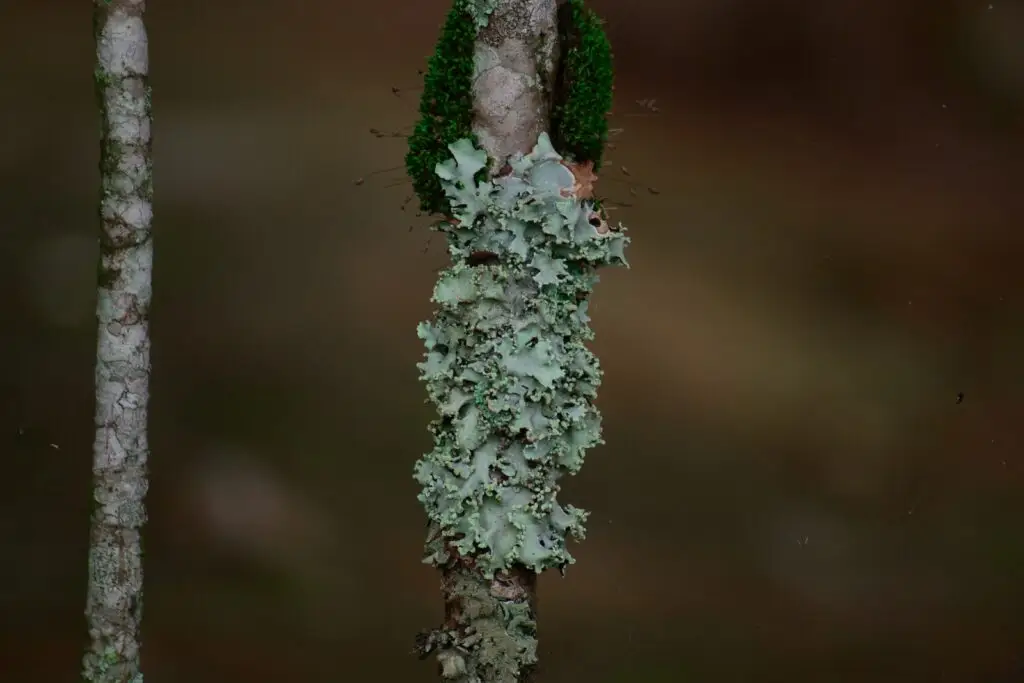Introduction:
This article will cover the “relation of organisms with the same and different species” in detail with examples.
Nature interacts not only with other species but with an individual of other species. Again the interaction may be between animals themselves, between the plant themselves, and maybe between plants and animals.
Thus various types of interaction may be classified into two basic categories:
Symbiosis:
It is an association in which both species benefit, and neither is harmed.
Antagonism:
It is an association in which at least one of the specie is harmed.
Odum (1971) agreed to use Symbiosis and divided various interactions into two significant groups.
A) Positive interaction:
In this association, populations help one another, the interaction being either one way or reciprocal, for example, commensalism, mutualism, etc.
b) Negative interaction:
In this association, the member of one population may eat a member of another, and compete for food and space, for example, competition, predation, parasitism, and ammensalism.
The silent features of various interactions are as follows:
- Neutralism
- Commensalism
- Mutualism
- Ammensalism
- Competition
- Parasitism
- Predation
Neutralism:
Most interactions between any two species are neutral, and neither direct species effect the other. In the case of neutralism, two species provide benefits to each other through an indirect method.
For example
A general food chain shows below.
The given food chain shows that rabbit eat grass and Eagle eats rabbit; an Eagle indirectly benefits to gross by helping to control the population of rabbits.
Similarly, the grass indirectly benefits The Eagle by flattering up its prey. So Eagle—-grass interaction is regarded as neutral.
Commensalism:
It is the type of interaction in which species are associated so that one partner benefits while the other is neither benefited nor harmed. Such Association is called commensal this process is called commensalism.
Example number 1:
Epiphytes are small plants found growing on other large plants for space only. They absorb water and Minerals from the atmosphere and prepare their own food.
Example number 2:
Nest on trees: Most birds make nests on the trees for greetings and shelter from the prey; the most giant tree is neither benefited nor harmed.
Amensalism:
It is the negative type of interaction in which different species are associated so that one population inhibits or reduces the other. Here none of the population drives any benefit. Such a type of negative interaction is said to be ammensalism.
Example number 1:
Certain land plants harm animals; for example, a semi-desert plant, Helgeton glomeratus, found in Nevada, kills the sheep that eat it.
Example number 2:
The action of penicillin, streptomycin, and other antibiotics produced by fungi in destroying various pathogenic Bacteria is familiar.
Mutualism:
It is the type of positive interaction in which different species are associated so that both partners benefit from each other or harm themselves. Such a type of positive interaction is said to be mutualism.
Example number 1:
Lichen: It is the association of algae and fungal hyphae. Approximately 90% of chlorophyllous algae make their own food, while 10% are fungal hyphae that protect the algal partner from strong light and desiccation. Thus algal partners and fungal hyphae are integral to each other.
Example number 2:
Nitrogen-fixing bacteria rhizobium live in the root nodules of leguminous plants like peas, gram, etc. The bacteria obtain food and shelter from plant wild in return day fix nitrogen into nitrates from the plant, which is required for their growth.
Competition:
It is the type of negative interaction in which two or more individuals or species try to gain or achieve the same resource:
The common factor for which the organisms compete with each other is the following:
- Food
- Space
- Light
- Nutrients
- Pollinating and dispersal Agents etc.
For example: –
Two or more two species (birds_ living in a Jungle compete with each other to make a nest on the tallest trees.
Types of competition: –
There are two basic types of competition:
- Intraspecific competition
- Interspecific competition
Intraspecific competition
If competition takes place between individuals of the same species. Such type of competition is said to be intraspecific competition. Competition always harms both participants because each competitor reduces or inhabits the essential resources.
Inter-specific competition: –
If competition occurs between individuals of different species, such competition is said to be intraspecific. Competition always harms both participants because each competitor reduces or inhibits the essential resources.
Parasitism:
The ecological interaction between two organisms in which one is the parasite and the other is the host. Such a type of negative interaction is said to be parasitism.

No organism is free from parasites. Even parasites may have parasites or conditions that May have been called hyper-parasitism. For example, a single word may have as many as 22 – 40 different kinds of parasites in its skin, feathers, gut, blood, etc.
Types of parasites: –
The parasite may also be classified as ectoparasite and endoparasites.
Ectoparasites:
Live outside i.e. on the surface of the host cell or body, and get food from there. Mosquitoes, leeches, and lice are examples of ectoparasites.
Endoparasites:
Live inside the host’s body to get food and shelter—bacteria, viruses, Tape-worm Entamoeba, Plasmodium, etc. Parasites also may be phycoparasites or zoo parasites.
PhytoParasites:
The parasite which attacks the plant body is said to be phytoparasite.
For example:
Some plants (e.g. Cascuta, also called dodder) are parasites on other plants. Parasitic plants grow a particular type of root (haustoria) into the host body and suck the required nutrients from the host’s vascular tissue.
Zooparasites:
The parasite which attacks the animal’s body is said to be a zooparasite.
For example, animal parasites or Protozoans, Platyhelminthes, nematodes, etc.
Predation:
The ecological interaction between two organisms in which one is the Predator and the other is the prey, such negative interactions are said to be predation primarily animals, and some plants show the predation process.

In animals:
All carnivorous or Predator, for example, frog preys upon insect, snake prey upon a frog, fox preys upon the rabbit, and lion preys upon zebra.
In plants:
Certain plants (e.g. Picture Plant, sundew plant, Venus fly trap, etc.) are carnivorous and live as Predators. Such plants live the areas where Minerals and nutrients are lacking. They feed on insects to fulfill their nitrogen fixation requirement.
Key Points (Relation of organisms with the same and different species)
- 🤝 Symbiosis: An association in which both species benefit and neither is harmed.
- ⚔️ Antagonism: An association in which at least one species is harmed.
- 💡 Positive interaction: Populations help one another, such as in commensalism and mutualism.
- 🚫 Negative interaction: Members of one population eat or compete with members of another, as in competition, predation, parasitism, and amensalism.
- 🌿 Neutralism: Most interactions between species are neutral, with no direct effect on each other.
- 🐦 Commensalism: One species benefits while the other is neither benefited nor harmed.
- 🐏 Amensalism: One population inhibits or reduces another with no benefit to either.
- 🤝 Mutualism: Different species benefit from each other or harm themselves.
- ⚔️ Competition: Two or more individuals or species try to gain the same resource, like food, space, light, etc.
- 🦠 Parasitism: One organism is the parasite, and the other is the host, causing harm to the host.
- 🦁 Predation: One organism preys upon another, typically in animals and carnivorous plants.
FAQs about Relation of organisms with the same and different species
Intra-specific relationships occur between individuals of the same species, while inter-specific relationships involve interactions between individuals of different species.
No, an organism cannot simultaneously have both mutualistic and parasitic relationships. These relationships involve different types of interactions and outcomes.
Competitive relationships can influence ecosystem resource allocation, population dynamics, and species distribution. They can also drive adaptations and promote the survival of the fittest.
Examples of predator-prey relationships include lions hunting gazelles, owls preying on mice, and sharks feeding on fish in the ocean.
Studying relationships between organisms helps us understand the intricate workings of ecosystems, species interactions, and the balance of nature. It provides insights into biodiversity, adaptation, and the conservation of ecosystems.
References:
- Agrawal, A. A. et al. Filling Key Gaps in Population and Community Ecology. Frontiers in Ecology and the Environment 5, 145-152 (2007).
- Brooker, R. W. et al. Don’t Diss Integration: A Comment on Ricklefs’s Disintegrating Communities. American Naturalist 174, 919-927 (2009).
- Connell, J.H. Diversity in Tropical Rain Forests and Coral Reefs. Science 199 (4335): 1302-1310 (1978).
- Deacon, J. in Fungal Biology Vol. 4, 256 (Blackwell Publishing, 2006).
- Greenwood, M. J., McIntosh, A.R. & Harding, J. S. Disturbance Across an Ecosystem Boundary Drives Cannibalism Propensity in a Riparian Consumer. Behavioral Ecology 21, 1227-1235.
- Gurevitch, J., Scheiner, S. M. & Fox, G. A. The Ecology of Plants Vol. 2, 257 (Sineaur Associates, Inc., 2006).
- Hardin, G. The Competitive Exclusion Principle. Science 131,1292-1297 (1960).

